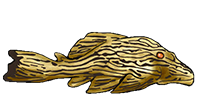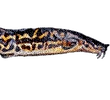Raja, K., Selvaraj, S., & Chinnasamy, A. (2019). Inhibition of colon carcinoma cell lines by treatment with crude spine venom from marine catfish Tachysurus dussumieri. International Journal of Bio-Pharma Research, 8(6): 2607-2616.
http://dx.doi.org/10.21746/ijbpr.2019.8.6.2
https://www.ijbpr.net/index.php/ijbpr/article/view/136
Key words: , Histology, Spine venom, Cytotoxicity, DNA fragmentation.Abstract: Catfishes, come under the order Siluriformes, they represent as venomous fishes having venom glands in that dorsal and pectoral spines that are speared into place when threatened. The catfish, spine venom is unsafe and having neuromuscular blocking activity, envenoms causes instant, local and intense pain, and a variable extent of bleeding. The present study was carried out in the histological section of spine and effect of spine venom on human colon cancer cell lines (HT 29 and COLO 320). Histology study of spine shows the presence of venom secretory cells. Venom was extracted from spines of catfish and the biochemical composition such as protein (1.020 mg/ml), lipid (0.955 mg/ml) and carbohydrate (0.313 mg/ml) was estimated. Protein profiles of Native and SDS page were indicating both high and low molecular weight of proteins. Toxicity on brine shrimp nauplii revealed the LC50 observed at 400 mg/ml. Result of spine venom on Vero cell line showed maximum cell viability up to 800 mg/ml. The cell viability on HT 29 and COLO 320 cell lines showed IC50 at a concentration of 300 mg/ml and 400 mg/ml, at the time of 24 h incubation. Significantly Propidium iodide staining method was observed to view damaged nucleus of cells. DNA fragmentation assay has confirmed DNA fragments due to the induction of apoptosis.





